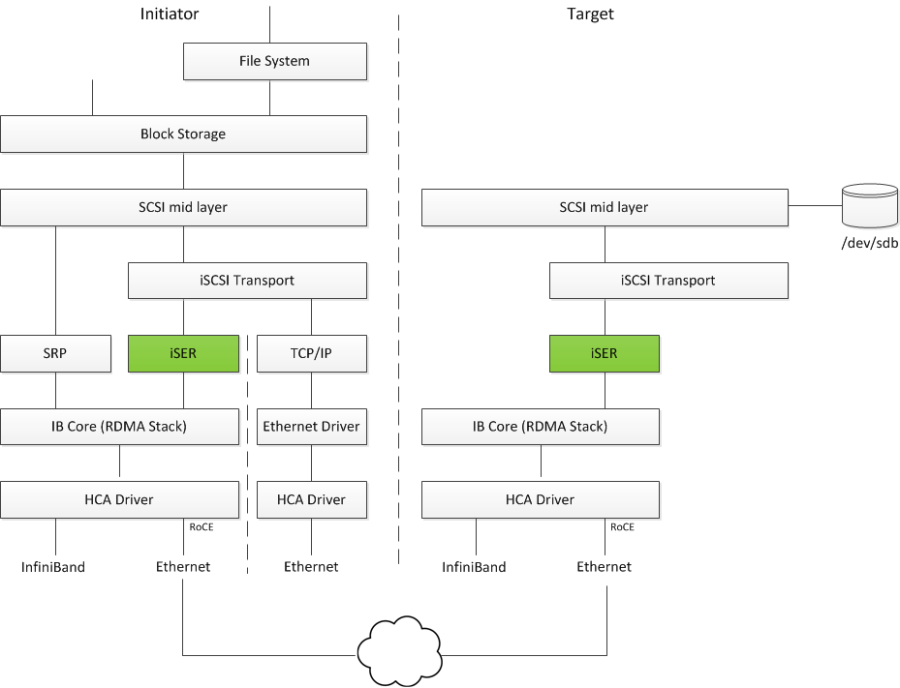iSER - iSCSI Extensions for RDMA
iSCSI Extensions for RDMA (iSER) enhances the iSCSI protocol by integrating it with RDMA, enabling direct data transfers to and from SCSI buffers without intermediate copying.
By leveraging the RDMA protocol suite, iSER provides higher bandwidth for block storage transfers with zero-copy efficiency. This approach eliminates the overhead of TCP/IP processing while maintaining full compatibility with the iSCSI protocol.

There are three target implementation of ISER:
Linux SCSI target framework (tgt)
Linux-IO target (LIO)
Generic SCSI target subsystem for Linux (SCST)
Each target can operate in either TCP or iSER transport mode.
iSER also supports RoCE without requiring additional configuration. To bond RoCE interfaces, set the fail_over_mac option in the bonding driver (see "Bonding IPoIB").
In the network stack, RDMA/RoCE is positioned below the iSER layer. To run iSER, ensure that the RDMA layer is properly configured and validated, whether over Ethernet or InfiniBand. For guidance on troubleshooting RDMA, refer to "HowTo Enable, Verify and Troubleshoot RDMA" community article.
The iSER initiator is controlled through the iSCSI interface available from the iscsi-initiator-utils package.
To discover and log into iSCSI targets, as well as access and manage the open-iscsi database use the iscasiadm utility, a command-line tool.
To enable iSER as a transport protocol use "I iser" as a parameter of the iscasiadm command.
Example for discovering and connecting targets over iSER:
iscsiadm -m discovery -o new -o old -t st -I iser -p <ip:port> -l
Note that the target implementation (e.g. LIO, SCST, TGT) does not affect he initiator process and configuration.
Setting the iSER target is out of scope of this manual. For guidelines of how to do so, please refer to the relevant target documentation (e.g. stgt, targetcli).
Targets settings such as timeouts and retries are set the same as any other iSCSI targets.
If targets are set to auto connect on boot, and targets are unreachable, it may take a long time to continue the boot process if timeouts and max retries are set too high.
For various configuration, troubleshooting and debugging examples, refer to Storage Solutions on the Community website.